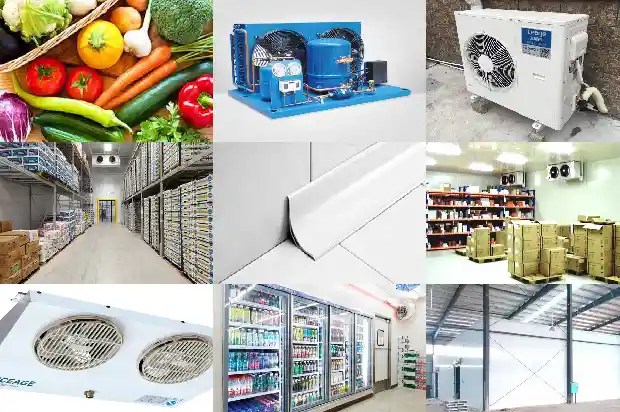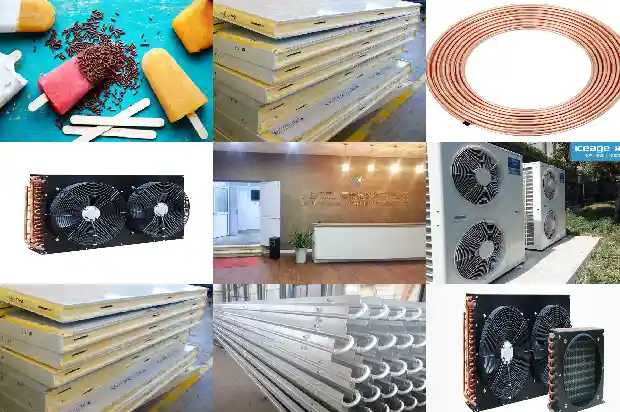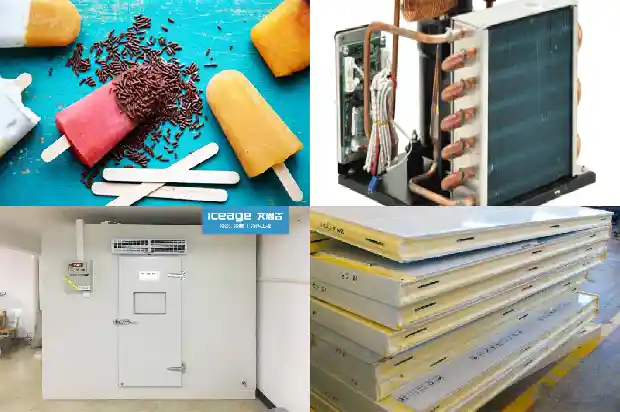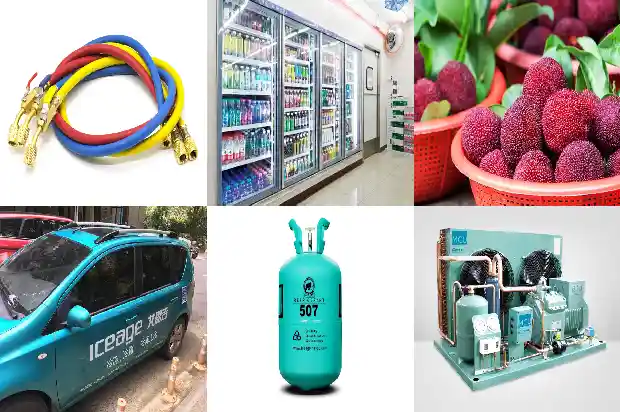Four types of flammable and explosive refrigerants
2024-08-27
- R32 Refrigerant
R32, also known as difluoromethane or carbon difluoride, is colorless and odorless. Its safety level is A2. R32 is an excellent fluorocarbon substitute in terms of thermodynamics. It has a relatively low boiling point, low vapor pressure and pressure ratio, a large refrigeration coefficient, zero ozone depletion value, and a small greenhouse effect coefficient.
It is flammable and explosive. Its combustion limit in air is 15% - 31%. It will burn and explode when exposed to open flames.
R32 has a low viscosity coefficient and a high thermal conductivity coefficient. Although R32 has many advantages, it is a flammable and explosive refrigerant. Air conditioner installation and maintenance is already a dangerous job. Now, with the uncertain factors of R32, safety issues have to be considered. Vacuuming is required when installing and welding R32 refrigeration equipment. - R290 Refrigerant
R290 (propane) is a new type of environmentally friendly refrigerant, mainly used in central air conditioners, heat pump air conditioners, household air conditioners and other small refrigeration equipment. As a hydrocarbon refrigerant, R290 has an ODP value of 0 and a GWP value of less than 20. It has obvious environmental protection advantages compared with common refrigerants, as shown below:
The damage of R22 refrigerant to the ozone layer is 0.055, and the global warming coefficient is 1700;
The damage of R404a refrigerant to the ozone layer is 0, and the global warming coefficient is 4540;
The damage of R410A refrigerant to the ozone layer is 0, and the global warming coefficient is 2340;
The damage of R134a refrigerant to the ozone layer is 0, and the global warming coefficient is 1600;
The damage of R290 refrigerant to the ozone layer is 0, and the global warming coefficient is 3.
In addition, R290 refrigerant has the characteristics of greater latent heat of evaporation, good fluidity and energy saving. However, due to its flammable and explosive characteristics, the filling amount is limited, and the safety level is A3. Vacuuming is required when using R290 refrigerant grade and open flames are prohibited. Because air (oxygen) mixture can form an explosive mixture, there is a risk of combustion and explosion when exposed to heat sources and open flames. - R600a Refrigerant
R600a isobutane is a new type of hydrocarbon refrigerant with excellent performance. It is extracted from natural ingredients, does not damage the ozone layer, has no greenhouse effect and is environmentally friendly. Its characteristics are large latent heat of evaporation, strong cooling capacity; good fluidity, low transmission pressure, low power consumption and slow load temperature rise speed. It is compatible with various compressor lubricants. At room temperature, it is a colorless gas. Under its own pressure, it is a colorless and transparent liquid. R600a is mainly used to replace R12 refrigerant and is now mostly used in household refrigerator equipment.
The explosion limit volume of R600a refrigerant is 1.9% - 8.4%, and the safety level is A3. It can form an explosive mixture when mixed with air. There is a risk of combustion and explosion when exposed to heat sources and open flames.
It reacts violently when in contact with oxidants. Its vapor is heavier than air and can spread to a considerable distance at a lower place. When it encounters a fire source, it will reignite.


- R717 (Ammonia) Refrigerant
Finally, let's talk about R717 (ammonia) refrigerant. Ammonia is more dangerous than the above three refrigerants. It belongs to toxic media with toxicity level 2.
When the volume concentration of ammonia vapor in the air reaches 0.5 - 0.6%, people will be poisoned if they stay in it for half an hour. The nature of ammonia determines that the ammonia system must be operated and maintained in a standardized way. Refrigeration personnel should pay attention when using it.
Ammonia is a medium-temperature refrigerant. Pure ammonia has no adverse effect on lubricating oil. However, when there is moisture, it will reduce the lubricating effect of refrigeration oil. Copper and copper alloys are not used for pipes and valves in ammonia refrigeration systems. The advantages of ammonia as a refrigerant are: easy to obtain, low price, moderate pressure, large refrigeration capacity per unit, high heat release coefficient, almost insoluble in oil, small flow resistance, easy to detect in case of leakage, no damage to the ozone layer and no greenhouse effect. Its disadvantages are: it has an irritating odor, is toxic, can burn and explode, and has a corrosive effect on copper and copper alloys.
When the volume of ammonia vapor in the air reaches 0.5 - 0.6%, an explosion can occur. Therefore, the concentration of ammonia in the air in the machine room must not exceed 0.02 mg/L. At normal temperature, ammonia is a combustible gas. The explosion limit is 16% - 25%. The most easily ignited concentration is 17%, and the concentration when the maximum explosion pressure is generated is 22.5%.
Related Articles
- Introduction to Basic Types of Cold Storage
- Cleaning Methods for Different Types of Condensers in Refrigeration Devices
- Types and Temperature Requirements of Seed Cold Storages
- Introduction to Types of Condensers in Cold Storage
- What are the important significances of a warm environment for various types of food?
- 5 Common Types of Refrigeration Compressors
- The characteristics and uses of 26 types of air conditioning refrigerants
- Four Combustible and Explosive Refrigerants: Precautions When in Use!
- Scheme for the Use and Safety of Ammonia Refrigerants
- Introduction to the Relationship between Refrigerants and Cold Storage Temperatures
- Performance of Eco-friendly Refrigerants 410A and R407C
